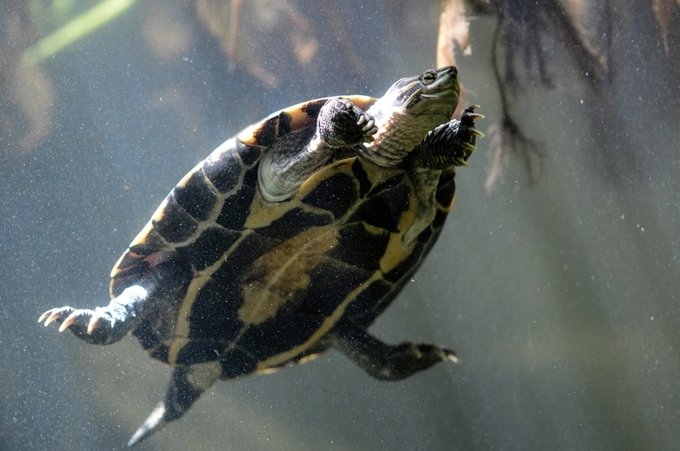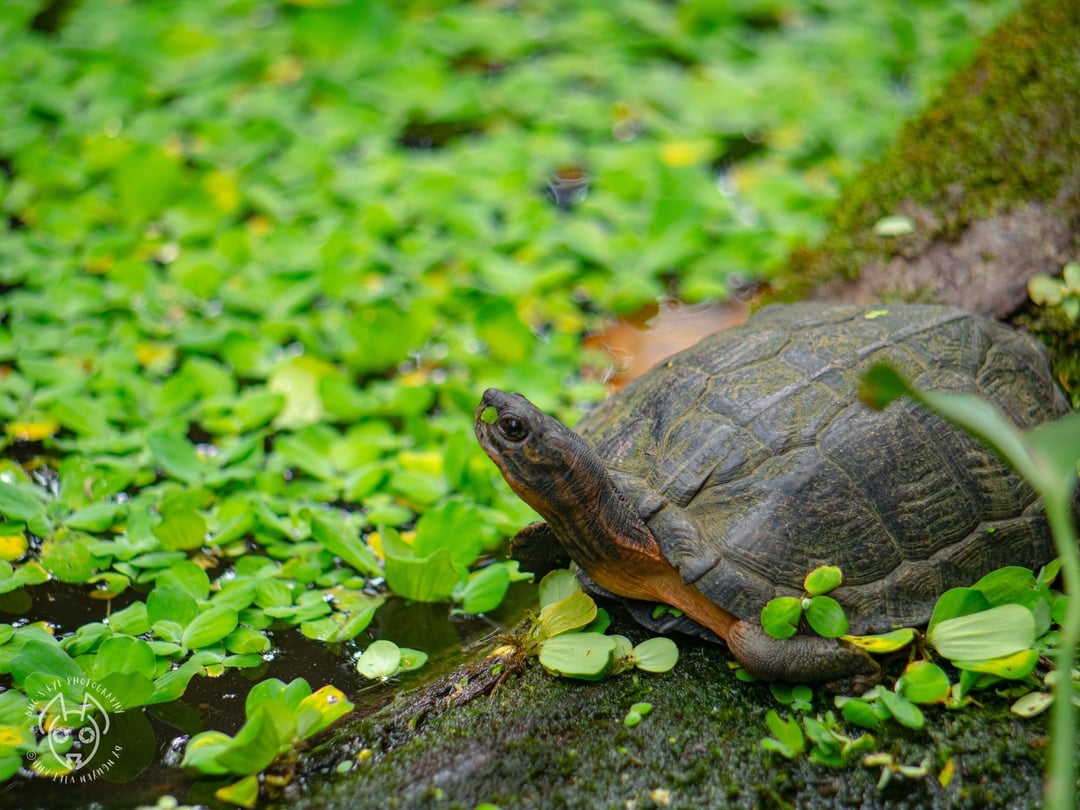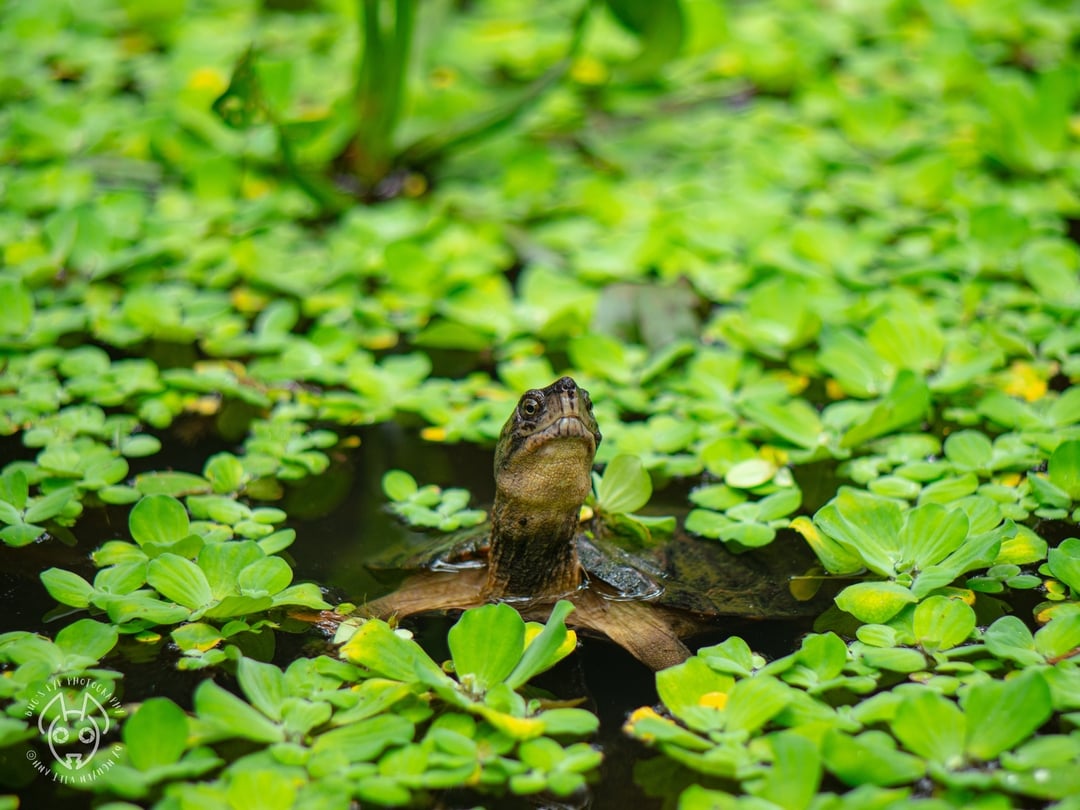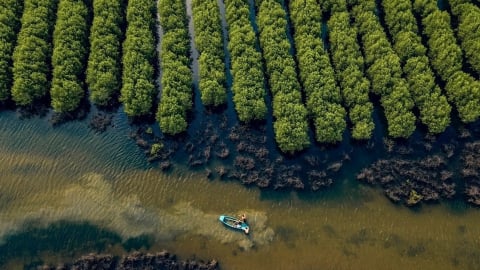Let’s conserve 26 species of tortoises and freshwater turtles in Vietnam together
Thứ Ba 23/05/2023 , 15:36 (GMT+7)(VAN) Rumors about the ability to cure diseases and improve health are causing immense pressure on the conservation of tortoises and freshwater turtles.
Southeast Asia in general and Vietnam in particular is the region with the most diverse species of tortoise and freshwater turtles in the world. There are more than 90 species of tortoise and freshwater turtles in Southeast Asia, accounting for over 25% of tortoise and freshwater turtle species known to date. The “Turtles of the World” report from the International Union for Conservation of Nature (IUCN) in 2021 ranked 17 species of Asian turtles among the world's 25 most threatened species.
On the other hand, Vietnam has 26 species of tortoise and freshwater turtles distributed naturally with 23 species listed in the lists of endangered and rare species and 8 species banned from exploitation and use for commercial purposes.
All of Vietnam’s turtles are protected
All species of tortoise and freshwater turtle native to Vietnam are currently protected under Vietnamese and international laws. Accordingly, all acts of hunting, catching, raising, confining, killing, storing, transporting, trading, and collecting specimens of tortoises and freshwater turtles in contravention of the law are strictly prohibited.

Violations related to endangered, precious and rare species can be criminally prosecuted with fines of up to 15 years in prison for individuals and VND 15 billion for legal entities.
Overall, Vietnam has 26 native tortoise and freshwater turtle species listed in the Appendices to the Convention on International Trade in Endangered Species of Wild Fauna and Flora (CITES). In which, 4 species are listed in Appendix I, 20 species are listed in Appendix II and 1 species is listed in Appendix III.
Decree No. 06/2019/ND-CP (amended and supplemented by Decree No. 84/2021/ND-CP) on the management of endangered, precious and rare fauna and flora and the Government’s implementation of CITES Convention (referred to as ND06) also includes 9 species of native tortoises and freshwater turtles in group IB and 17 species of native tortoises and freshwater turtles in group IIB in the list of endangered, precious and rare fauna and flora attached to this Decree.

Acts related to exotic species can be administratively sanctioned up to VND 1 billion per individual, depending on the severity of the matter.
Unfounded rumors about turtle meat
There are many unfounded rumors spreading around at the moment about the effects of turtle meat, such as curing cardiovascular disease, cancer, or physiology. Some people think that eating turtle meat stewed with dodder, lotus seeds, and black beans can cure heart disease and high blood pressure.
Regarding this issue, Dr. Quan Van Hung, Ho Chi Minh City Institute of Ethnic Medicine and Pharmacy said that there has been no research to confirm the effectiveness of turtle meat to cardiovascular disease.
There are even rumors about elongated tortoise being an extremely rare species, living in the great forest, absorbing the aura of heaven and earth, so its flesh and blood are pure, one bite is enough to enhance vitality, especially if those with heart disease drink wine mixed with elongated tortoise bile or blood, the disease will be gone for good.
Medical experts however believe that elongated tortoise is not accurately a “box” of yang tonic, so using it incorrectly will make the disease worse. In addition, from the medical literature of the past and present, there is no document mentioning the use of blood, bile, and feces of elongated tortoise in the treatment of cancer or heart diseases.

There are many unfounded rumors spreading around at the moment about the effects of turtle meat.
Not to mention, raising turtles as pets also contains a high risk of infection, and the owner is also likely to be breaking the law. First of all, if the owner is not careful to keep his distance, turtle bites can be an existential risk.
The US Centers for Disease Control and Prevention (CDC) once published an investigation showing the number of salmonella infections related to pet turtles. This bacteria lives on the shells and skin of turtles. Accordingly, salmonella is a gastrointestinal infection, with the common symptom of diarrhea. Other symptoms include fever and stomach cramps. Severe cases can lead to death.
And from a legal perspective, most native tortoise and freshwater turtle species are protected by Vietnamese law, under the 2015 Criminal Code (amended and supplemented in 2017). Violations related to these species can be criminally prosecuted with fines of up to 15 years in prison for individuals and VND 15 billion for legal entities.

Raising turtles as pets also contains a high risk of infection, and the owner is also likely to be breaking the law.
The problem of illegal turtle trade in cyberspace
It can be said that poaching - illegal trade and habitat loss are the two main threats to the survival of turtle species. In particular, poaching and illegal trade is considered the main reason for the endangered state of many Vietnam-native turtles. Despite relentless efforts of law enforcement agencies and conservation organizations at home and abroad, the control of wildlife trade in general and the online turtle trade in particular remains a complicated matter.
According to the report "Online Turtle Market: Exciting Turtle Market on Facebook and Youtube in Vietnam in 2021" published by the People and Nature Reconciliation (Pannature) and the Asian Turtle Program (ATP), the survey results on the two platforms Facebook and Youtube in 2021 shows that the turtle market on social networks in Vietnam is very active, and 2021 is the year when the online market experienced the strongest growth.
Ho Chi Minh city and Hanoi are the two locations with the highest number of online turtle trading activities in Vietnam. Among the channels that can be spotted, the number of online stores in Hanoi is the highest with 19 pages; followed by Ho Chi Minh City with 17 pages.

The turtle market on social networks in Vietnam is very active, and 2021 is the year when the online market experienced the strongest growth.
Vietnam’s effort in protecting turtles
Facing such a situation, many programs and projects to protect tortoises and freshwater turtles in Vietnam are being implemented, including the Asian Turtle Program (ATP) - an organization specialized in the research and conservation of turtles in Vietnam.
According to Hoang Van Ha, a member of ATP, the Asian Turtle Program has constructed and carried out many research and conservation activities for the most endangered species in Vietnam. Along with on-site conservation projects, the Hoan Kiem Turtle Conservation Project in the North of Vietnam, which has been implemented since 2003, can be considered a prime example.
“As for translocation conservation activities, ATP has cooperated with Cuc Phuong National Park and other wildlife rescue centers in Vietnam to rescue, restore health and re-release turtle species native to Vietnam,” Ha said.

The Asian Turtle Program has constructed and carried out many research and conservation activities for the most endangered species in Vietnam.
At the Turtle Conservation Center (TCC) in Cuc Phuong National Park, Ms. Nguyen Thu Thuy, coordinator of the ATP's rescue, training and animal management program, said “From 2015 to the present, every each year TCC receives 200 to 400 individuals of about 15 to 20 different species of turtles, mainly from illegal trade seizures, of which only 6 to 7% of individuals are from voluntary transfer”.
Compared with the reported number of tortoise and freshwater turtles confiscations during the 1995-2000 period, the present amount is less than 10% of the previous confiscation. This shows that the number of turtles in the wild has been severely reduced. Therefore, the members of TCC would work around the clock when there is a need for rescue, setting out to save the animals as soon as possible after receiving information.
The whole community needs to join hands
On September 12, 2019, the Prime Minister issued Decision 1176/QD-TTg, approving the "Program to conserve Vietnam's endangered turtle species until 2025, vision to 2030".
This is a conservation program for endangered turtle species which contributes to the conservation of biodiversity in Vietnam. Conservation of endangered turtle species is the responsibility of the whole society, management agencies, all organizations, businesses and individuals. The program also promotes socialization and strengthens international cooperation in the conservation of endangered turtle species.

The overall objective of the program is to protect and sustainably develop Vietnam's endangered turtle populations and their habitats, contributing to the conservation of Vietnam's biodiversity.
The program will develop a system of legal documents on turtle conservation; strengthen investigation and research on turtle species; build effective turtle protection models; strengthen law enforcement and management; raise awareness and community participation in turtle conservation.
Authors: Tung Dinh - Hai Nam
Translated by Samuel Pham


![Turning wind and rain into action: [1] Forecasting for farmers](https://t.ex-cdn.com/nongnghiepmoitruong.vn/480w/files/news/2025/06/11/e5a48259d6a262fc3bb3-nongnghiep-111919.jpg)
/2025/06/11/3507-1-161904_583.jpg)